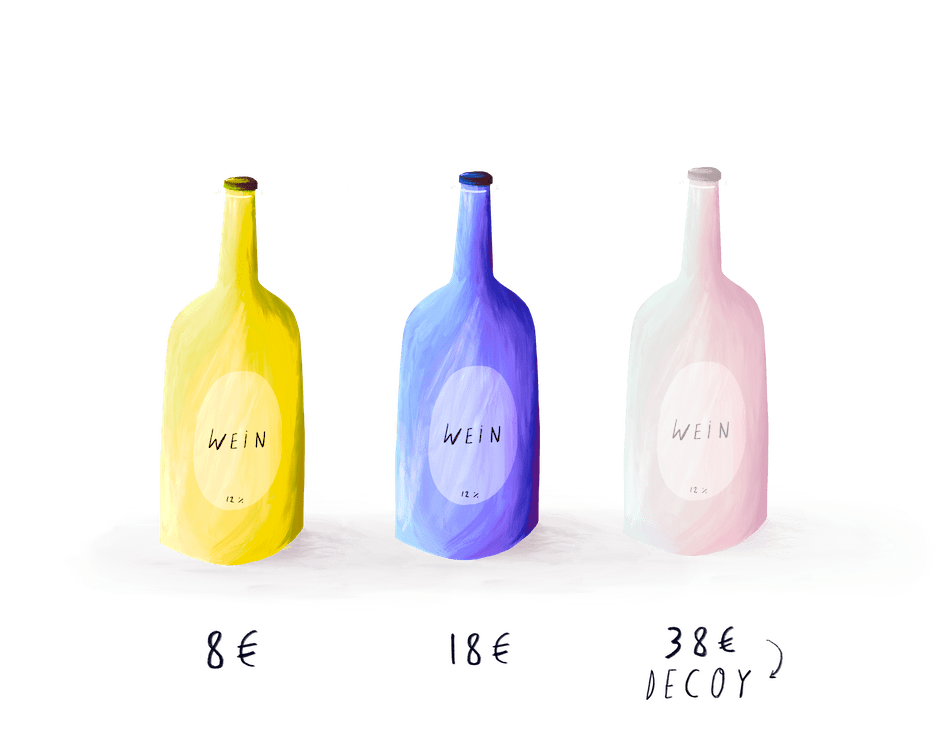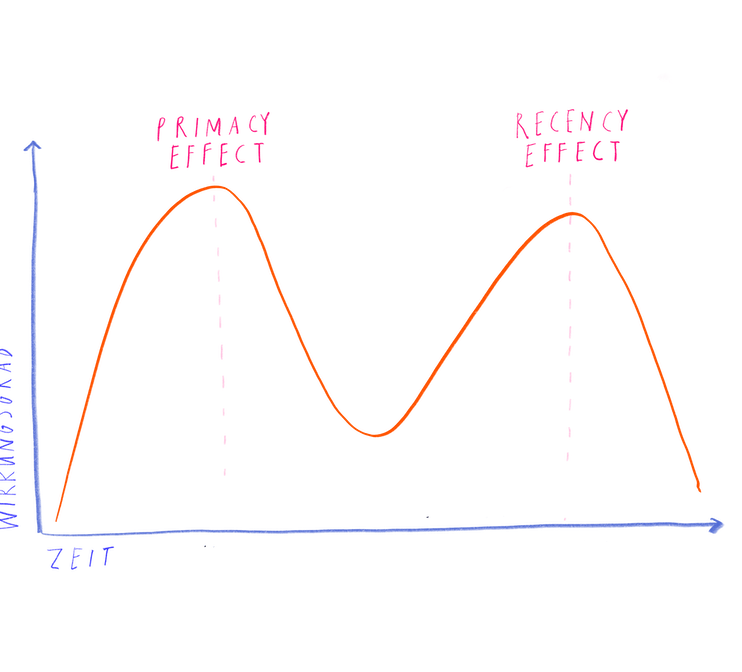
Imagine you could guide your customers with invisible strings and make exactly the decision you want them to make - without manipulation, but on the basis of psychological patterns.
Sounds magical? Then you should get to grips with behavior patterns! These behavior patterns help you understand the motives of your target group and inspire them in a targeted manner.
In this article, we will show you what behavior patterns there are and how you can use them to really convince your customers and increase your conversions.

Table of contents
What are Behavior Patterns?
Behavior patterns are psychological patterns that describe how people react to certain stimuli or situations. These patterns arise from our thought processes and experiences and influence how we make decisions, solve problems and motivate ourselves. Essentially, it is about how our cognitive and emotional reactions are controlled - often unconsciously.
In short:
Behavior patterns are psychological patterns that influence and unconsciously guide our decisions.
These behavior patterns are not random, but often follow recurring principles that can be used in marketing to direct the attention and behavior of the target audience. For example, a behavior pattern can make people more likely to respond to certain calls to action or make a preferred choice when presented with a range of options.
Behavior patterns are particularly powerful because they address the often invisible but powerful psychological levers that guide our daily decisions. They help marketers to shape their messages in a more targeted way and thus influence the decision-making process of their customers - without being perceived as manipulation.
Psychological foundations of behavior patterns
Research on behavioral patterns is deeply rooted in cognitive psychology and is strongly based on the findings of Daniel Kahneman and Robert Cialdini. Their work has shown us how human decisions work and which psychological principles influence them.
Daniel Kahneman: System 1 and System 2
Daniel Kahneman distinguishes between two basic thought systems that control and influence our behavior: System 1 and System 2. These two systems work in completely different ways to make decisions - one intuitively and quickly, the other analytically and consciously. The interplay between these systems determines whether we react spontaneously or act deliberately, depending on how complex the situation is and how much mental energy we are prepared to invest.
- System 1: This system works quickly, automatically and intuitively. It is responsible for the decisions we make without much thought, such as quickly recognizing danger or the gut feeling that guides us in a social situation. System 1 is efficient, but also prone to errors because it relies on pattern recognition and emotional reactions.
- System 2: In contrast, System 2 is slow, analytical and requires conscious effort. It is activated when we need to solve complex problems, make strategic decisions or learn something new. Although it is more precise, it takes more energy and time. This means that we only use System 2 when we really have to, as our brain is always trying to save energy.
Robert Cialdini: The seven principles of persuasion
Robert Cialdini has defined seven principles of influence that explain why people make decisions and how they react to certain stimuli. These principles are based on deep-rooted psychological mechanisms and show how our behavior is driven by social, emotional and cognitive factors. They offer valuable insights that marketers can use to develop targeted strategies that influence the decision-making process of their target group. The seven principles are:
- Reciprocity:
People feel obliged to give something back when they have received something. Many marketers use this principle by offering free samples or information to encourage reciprocity. - Commitment and consistency:
Once people have committed to a decision, they tend to remain consistent in their future actions. This principle is often used to turn small, initial commitments into larger actions. - Social proof (social proof):
We are guided by the behavior of others, especially in uncertain situations. Positive reviews, testimonials and recommendations are typical examples of how social proof is used in marketing strategies. - Sympathy:
We are more likely to be influenced by people we like or with whom we have a connection. Marketers use this principle by using brand ambassadors or likeable characters in advertising. - Authority:
People tend to trust experts or authorities and follow their recommendations. This principle works well when a product or service is endorsed by a well-known and respected personality. - Scarcity:
Things that are rare or have limited availability seem more valuable to us. Offers such as "only a few left in stock" or "only available for a short time" use precisely this principle to create a sense of urgency. - Unity (unit):
This principle emphasizes the influence of belonging and shared identity. People feel more attracted to a group and are more easily influenced if they see themselves as part of this group.
Important behavior patterns in marketing and e-commerce
Decoy effect

Decoy effect
This trigger is like the hidden joker up your sleeve. By adding a third option that is less attractive, you ensure that the choice you actually want appears in a glowing light. A clever way to steer your users' choices. Find out more about the decoy effect here.
Affect heuristics

Affect heuristics
Feel instead of think - emotions often guide us faster than the mind. Use this knowledge to encourage your visitors to make quick decisions with emotionally appealing elements. Find out more about affect heuristics here.
Primacy effect

Primacy effect
As with the first chapter of a book, the first impression on your website will shape what users expect and how they react. Use this knowledge to build a strong, positive connection right from the start. Show your best offers and content first to create a lasting impact. Find out more about the primacy effect here.
Mere exposure effect

Mere exposure effect
Paradox of Choice

Paradox of Choice
Too many options can quickly become overwhelming. By specifically reducing the number of choices, you simplify the decision-making process for your users and increase the chance of a conversion. A clear, focused path leads to more satisfied visitors. Find out more about the Paradox of Choice here.
Framing effect

Framing effect
The way you present information shapes perception. A positive frame around your offers can significantly increase their attractiveness and encourage users to make a decision in your favor. Find out more about the framing effect here.
Scarcity

Scarcity
The feeling that something could soon no longer be available awakens desire. Use scarcity to emphasize the value of your offers and motivate users to act quickly. Find out more about scarcity here.
Halo effect

Halo effect
The halo effect ensures that a single quality influences the entire image. Use this effect to put your brand in a favorable light through targeted associations and likeable characters. Let your products shine brighter with the glow of familiar faces or convincing details. Find out more about the halo effect here.
Dunning-Kruger effect

Dunning-Kruger effect
A little knowledge often feels like a lot. The Dunning-Kruger effect describes how people with little experience overestimate their abilities. In marketing, you can use this effect by giving customers a simple sense of achievement and encouraging them to build on their newly acquired skills. Find out more about the Dunning-Kruger effect here.
Nudging

Nudging
Nudging uses small incentives and hints to subtly guide your customers' behavior without restricting their freedom of choice. With well thought-out placements or appealing design elements, you can motivate them to carry out a desired action. Learn more about nudging here.
Diderot effect

Diderot effect
The Diderot effect describes how a new purchase awakens the desire to buy other matching products. In marketing, you can use this effect by cleverly presenting complementary products and upgrades to motivate your customers to make further purchases. Find out more about the Diderot effect here.
Practical application of behavior patterns in marketing
The central lever for the use of behavior patterns is A/B testing. This approach allows you to specifically test different behavior patterns such as scarcity, social proof or the decoy effect to find out which ones work best for your target group. By pitting variants of your marketing against each other, you gain valuable data on how different approaches influence user behavior and the conversion rate. This allows you to make data-based decisions and continuously optimize your strategies to achieve maximum success.
Personalization and continuous optimization
Avoidance of dark patterns
Dark patterns are manipulative techniques that aim to persuade users to take actions that they do not actually intend. Such tactics can massively damage the trust of your customers and lead to a bad reputation in the long term. Instead, you should focus on the transparent and ethical use of behavior patterns. This means using targeted behavior patterns that help your users and support their decisions without deceiving them.
Ethics in the use of behavior patterns
- Openness and clarity: Ensure that all information is clearly communicated and users are aware of their choices.
- User centricity: Use patterns in a way that benefits your customers and improves their experience rather than manipulating them.
- Long-term relationships: Focus on building a trusting and positive relationship with your customers based on transparency.
Through the ethical use of behavior patterns, you not only ensure satisfied customers, but also build a solid foundation for long-term success.
Conclusion
Behavior patterns are more than just psychological theories - they are the key to taking your marketing strategies to the next level. Through targeted A/B testing, you can find out which patterns work most effectively to positively influence the behavior of your target group. The ethical use of these techniques creates trust and promotes long-term customer loyalty. Use these insights to make data-based decisions and give your company a clear competitive advantage.

